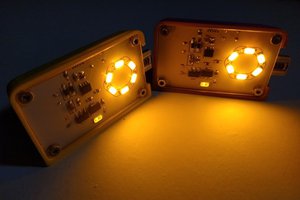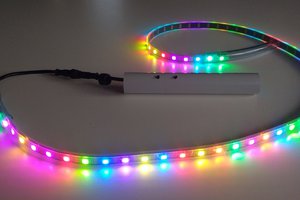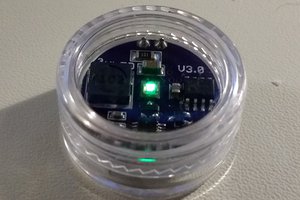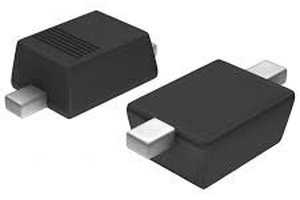I tip my hat to the "Pigeon's Nest" webmaster, who designed the circuit. Just two transistors, it makes one wonder why they invented the LM3909.
He said that the low VCE saturation voltage of the NPN transistor was essential for best efficiency. The ZTX869 transistor has become less obtainable these days, depending where you live. Mouser in the USA will sell me one for 95p, but charge £12 postage if I order less than £33.
https://www.mouser.co.uk/Search/Refine?Keyword=ZTX869
This made it worth looking for alternatives.
Easier said than done, as manufactures have varying ideas of what counts as low VCE, and it depends on the collector current. You have to read the data sheets carefully, especially graphs of VCE versus IC.
The ZTX869 is rated at 5 amps continuous collector current, way more than a typical LED needs.
I wondered how I could improve the design by making it smaller or easier to make. Maybe surface mount, and two transistors in one package. I tried using a legless device with pads on 0.65mm pitch, but it was rather fiddly to solder wires to the chip. I looked for SOIC packaged devices, which are less common but more manageable to the average hobbyist because you can mount them on 1.27mm pitch prototyping board.
I found two devices available from my usual UK source (Farnell) and they are also available elsewhere.
NXP PBSS4350SPN,115 from Mouser or Farnell.
ON Semiconductor NSS40302PDR2G from Mouser or Farnell.
These devices have low VCE for both the NPN and the PNP transistor, so you can use them in the original way with the NPN doing the major current switching, or the vertical mirror-image circuit with the PNP transistor doing the major current switching. The latter is the one I chose to try out.
The 100μ capacitor is the biggest component, so I looked for the smallest one available.
This one looks suitable, just 5 mm diameter: MCUMR6V3107M5X5.
You can get a 100μ tantalum capacitor in an 0603 SMD package: F980J107MMAAXE from Farnell although it is more expensive. That's just an option if you want a really small gadget.
The LED has to be high efficiency to get the most light for least current. The original circuit used a red LED, and these have forward voltages of around 2 volts. I recently bagged several reels (=thousands!) of good quality white LEDs, so I will investigate what I need to use them. They are dazzlingly bright at 13 mA. Forward voltage is about 4.2 volts, so a 3 volt input is better. One lithium-manganese cell or two alkaline cells will give 3V. Two NiMH cells would give about 2.4 volts falling to 2.2 volts. This might drive the white LED at 4.4 volts briefly until the capacitor voltage drops below minimum Vf.
Some thought and experiment will be expended to find the right component values for different LEDs.
A spreadsheet graph of NPN transistor saturation voltages against collector current indicates the NSS40302PDR2G is the best device.
 Keith
Keith
 Simon Merrett
Simon Merrett
 MaBe42
MaBe42
 Ted Yapo
Ted Yapo
 RachelAnne
RachelAnne